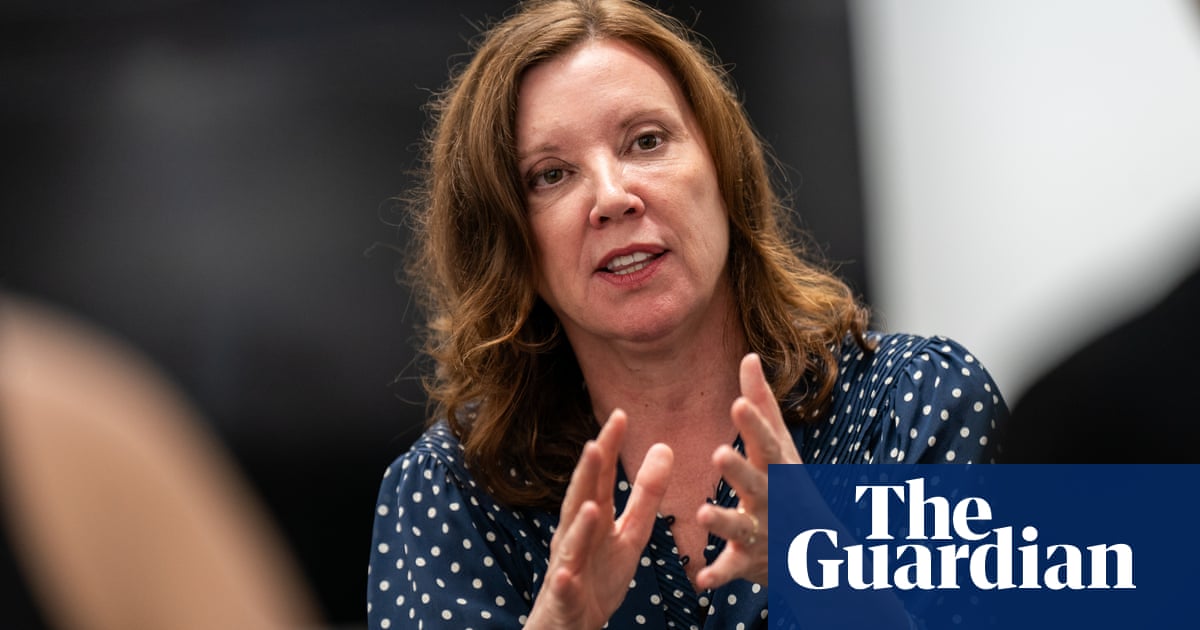When I got the chance to attend a conservative, evangelical high school in rural Iowa, I was ecstatic. My early education had been in a similar school – where creationism was the one true science, and evolution was satanic propaganda – and I’d spent the interim as a frightened pilgrim in the unholy land of public school. I was a teenage zealot and longed to be among my people.
Throughout those years, my church leaders urged me to proselytize to the public school students, to debate teachers about the age of Earth or the founding of our Christian nation, to be a spiritual exhibitionist, praying loudly at my locker or the flagpole. The apocalypse was at hand, so who had time for algebra?
I viewed my enrollment at Forest City Christian school in my junior year as being honorably discharged from my duty of “reclaiming our schools for Christ”. But what I envisioned as a sanctuary of faith, community and “true” education not only left me more disillusioned and bullied but also robbed me of a high school diploma and set me on a path of crushing financial insecurity that would haunt me for years.

Twenty-five years later, Donald Trump and the Christian nationalist movement that put him in the White House (twice) are seeking to transform public education into something similar to what I was reared on, where science, history and even economics are taught through an evangelical conservative lens, while prayer and Bible reading are foundations of the curriculum.
These efforts test the boundaries of the constitution’s establishment clause, reversing a century of civil rights victories in public schools, and have the potential to fundamentally alter the way American children learn – and what they learn about.
The push comes in two forms: injecting more Christian rhetoric and rituals into public school curriculum and for the first time in history, using tax dollars to subsidize private religious schools, generally via vouchers that cover student tuition. Each has the potential to bolster the education of America’s most privileged students, while downgrading services for children of low-income families.
In Oklahoma, the state superintendent ordered his public schools to teach from the Christian holy book; he later sought to mandate all schools to air a video in which he prays for Trump. On his desk sat a black mug with the Latin phrase si vis pacem para bellum: “If you want peace, prepare for war.”
In June, Louisiana passed a law ordering all classrooms to display the Ten Commandments. And in Florida, Pam Bondi, now Trump’s attorney general, supported a constitutional amendment to allow state funding for religious schools before voters rejected it.
In 2022, a supreme court ruling allowed private religious schools to receive government funding. In response to this, LGBTQ+ advocates helped pass the Maine Human Rights Act in their state, protecting students and faculty from discrimination. Two Christian schools are suing the state for the ability to violate the new law while still receiving government funding. Separately, the supreme court has taken up a case addressing whether to allow taxpayer funds for religious charter schools, potentially leading to the first Christian public school in the US.

In Texas, the state representative James Talarico has been fighting against a new elementary school curriculum that infuses Bible stories into language arts programs, as well as a bill that could allow students to use public funds to attend private schools, including Christian schools, a move he says will harm low-income students while bolstering the most privileged.
“Attempting to indoctrinate public school students into Christianity is not only unconstitutional and un-American, it’s deeply un-Christian,” says the former public school teacher, who is also studying to be a preacher.
And this wave of Christianizing is not limited to the south.
In 2023, my home state of Iowa passed legislation granting taxpayer-funded scholarships to families who enroll their children in private schools, including Christian ones. And last fall, a wildly successful Christian lobbying group, the Idaho Family Policy Center (IFPC), announced the drafting of a new bill that would require Bible reading in all Idaho public schools.
“By bringing back school-sponsored Bible reading, we are bringing God back into public education,” says Morgan MaGill, communications director for IFPC, which has drafted successful state measures restricting rights to abortion and transgender healthcare in Idaho.
Trump’s secretary of defense, Pete Hegseth, has characterized the growth of US Christian schools as an “educational insurgency” collecting “recruits” to build an underground army “with the opportunity later on of taking offensive operations in an overt way”, Hegseth said in a podcast appearance. Such militaristic language is reminiscent of the evangelical rallies, camps, youth services and Christian rock concerts I attended as a boy, where we were indoctrinated to be “soldiers in God’s army”, fighting to “take back our schools for Christ”.
That, said Hegseth, is “what the crop of these classical Christian schools are gonna do in a generation”.

Talarico views Texas’s efforts to create a voucher program for private Christian schools as not only bad for Jewish, Muslim and LGBTQ+ students, but also as stealing from the poor to serve the rich.
“If you gave my students on the west side of San Antonio an $8,000 or $10,000 voucher, there’s still no way they can afford a $20,000 a year private school,” Talarico says. “But because the voucher program is universal, the wealthy family that is sending their kid to that private school will now get an $8,000 or $10,000 discount on their tuition, at the expense of the working-class kids on the west side.”
Talarico adds that the voucher program includes funding for home-school students, up to 90% of whom are Christian and whose curriculum is often poorly regulated. “So we taxpayers will be funding homeschool programs that teach students the earth is flat,” he says.
The battle for schools
Trump’s promise to “bring back prayer to our schools”, shut down the Department of Education and embrace “school choice” fulfills an evangelical wishlist I’d heard about throughout my childhood. The belief that our government seeks to brainwash children into liberal atheists, close churches and outlaw prayer – threats that Trump promised to eradicate throughout the last election – were at the heart of the formation of the Christian right in the late 70s. But the clash over Christian education in America began long before.
Protestant education was the norm in the US for nearly two centuries. MaGill points out that Benjamin Rush – a founding father who helped build the US public school system – was a strong advocate for Bible reading in US schools.
And while opponents emphasize the idea of “separation of church and state”, those pushing to re-Christianize US public schools are correct when arguing that the phrase is not in the constitution. But it is misleading to claim that this was ever a settled – or simple – issue.
In 1797, John Adams signed the treaty of Tripoli, which stated: “The government of the United States of America is not in any sense founded on the Christian religion.”

The first amendment says: “Congress shall make no law respecting an establishment of religion, or prohibiting the free exercise thereof.” Thomas Jefferson later said the amendment created “a wall of separation between church and state”.
When I was growing up in the 80s and 90s, it was often explained to me that this phrase was intended to keep the government out of religion and not the other way around. The issue of religion in public education muddies this divide.
Throughout the 19th century Catholics fought for their unique prayers and scripture to be taught in public schools. When Tennessee passed a law in 1925 banning the teaching of evolution in public schools, the trial of a jailed science teacher captivated the nation, leading to a media circus that portrayed biblical literalists as “yokels”, accelerating the fundamentalist movement in America, as well as a deep distrust of both the media and intellectuals among evangelicals.
In 1962, the supreme court ruled that teacher-led prayer in school violated the first amendment’s establishment clause, essentially banning the practice. Many evangelicals – particularly in the south – felt that their religious rights had been violated years earlier when the court mandated that all US schools be racially integrated, as many white, southern Christians at the time interpreted scripture as mandating segregation.
In response, there was an explosion of what would come to be known as “segregationist academies”, private Christian K-12 schools and universities that believed they could continue to racially discriminate – while enjoying tax-free status – due to protections to their “religious liberties”. In time, they would create their own textbooks and accreditation systems, a whole bubble of education independent from public schools or conventional higher education.

In the late 1970s, the heavily segregated Bob Jones University had its tax-exempt status revoked by the IRS, a move that was interpreted by many evangelical pastors as the government shutting down a church. The ruling was blamed on Jimmy Carter’s new Department of Education (which would become a whipping boy for evangelicals in the years to come) despite the IRS acting on a court ruling from several years earlier.
The perceived attack on segregated Christian schools by the US government helped galvanize evangelicals into voting Republican.
Meanwhile, the Christian right doubled down on the creation of its own, independent education system, one that rejected evolution in favor of creationism, made students pledge allegiance to a Christian flag, and preached against environmental issues, LGBTQ+ rights and progressive policies.
Escaping the bubble
I was born in 1982, and my education began in this isolated world of alternative facts. In my Christian kindergarten, I learned to read using the Bible and did math equations from scriptures on tithing. We were taught a great deal about the dangers of communism, while our working-class parents fell victim to predatory capitalism, manipulated into paying a tuition they couldn’t afford, convinced public schools were unsafe.

The collapse of my parents’ small business, a farm crisis tanking the Iowa economy, and years of tithing and additional “seed faith” donations to our church had left them broke.
When I was in first grade, my mom and I performed janitorial work after hours for a reduction on my tuition. My dad borrowed money from family members to keep us enrolled and away from the dangers of public school. But following a divorce and bankruptcy, they, like many other working families, could no longer afford tuition.
I was terrified of public school, which I imagined to be a cesspool of adolescent sin.
I developed a hypervigilant paranoia when it came to the lessons of my public school teachers, particularly when it came to science and history. I was not only tasked with rescuing my classmates from hell; I had to avoid it myself, mainly through maintaining my belief in (a very specific definition of) God, which the “secular humanist” curriculum was a threat to. This required me to keep a heavy filter on the information I allowed into my mind and censor the thoughts that information inspired.
Consequently, I flunked half of my classes.
At the Christian school I attended my junior year of high school, things were different. We were taught from the lectures of creationists such as Ken Ham and Kent Hovind that our planet is only 6,000 years old, along with a detailed meteorological explanation for Noah’s flood. Hovind often blended conspiracy theories, such as evolution being a communist plot, into his lectures. Ham and Jessica DeFord’s book Climate Change for Kids explains to homeschooled and Christian school students: “Man cannot destroy the earth. God promised that.”
In “Logic” class, we learned about gay rights rallies in San Francisco that were attempting, according to my teacher, to “indoctrinate children into that lifestyle”. It was not uncommon to hear leaders in the Christian school movement, like the “Christian economics” textbook author Gary North, argue for capital punishment for all homosexuals. North believed this should occur through the biblical practice of “stoning”. As a thin, effeminate young man with little interest in sports or hunting (yet perked up if the conversation turned to musicals or Alloy magazine), I was a relentless target for the rural boys at the Christian school, who saw it as their religious duty to shout “fag” in my ear as they tussled my hair and knocked books from my hands.
The longer I stayed at the school, the deeper I fell into a malaise of depression and self-harm. In addition to the stress of bullies, I had trouble getting my mind around the logic of these classes, and knew that if I didn’t understand it, and believe it, eternal torture awaited me. Meanwhile, costs remained difficult. I was working part-time at Subway and Bennigan’s to pay for my Christian education, but it still wasn’t enough.
I headed back to public school for my senior year. I’d been there a semester before it was explained to me that my credits from Forest City Christian school didn’t transfer, because they weren’t “accredited” by the government. (The school has since closed.)
Instead, I was directed toward the GED testing center, where my education came to an unceremonious end with a generic certificate. Colleges and universities, I was told, were even worse than public schools in their liberal indoctrination, so I drifted through a decade of low-wage jobs in factories, restaurants and construction sites, as my fellow students who’d graduated from public school, then college, ascended the socioeconomic ladder.
In time, I developed my own education at libraries and bookstores. But first, I had to, in the words of Yoda, “unlearn what you have learned”. In fundamentalist education, all knowledge and thought must bend itself to unarguable truth that the Bible is 100% factual in all matters. The itchy curiosity of philosophy, the relentless questions of the scientific method, the skeptic probing of journalism, have no place in that world.
It was only through breaking out of the Christian education bubble – defecting from my duty to “reclaim America for Christ” – that I was able to cultivate strong learning faculties, eventually clawing my way into a career in journalism.
Perhaps my financial prospects would have been much brighter if I had stayed in my Christian high school, attended a Christian college like Liberty University (which accepts students from non-accredited Christian schools) and gone on to work at a megachurch like Joel Osteen’s Lakewood church or in a Maga political organization like Turning Point USA. But my inability to get my head around the 2+2=5 logic of creationist science, or the claim that our founding fathers intended to create a Christian theocracy, prevented me from being an effective soldier in the fight for Christian nationalism, despite how eager I was to join the fight.
Instead, I eventually traveled in the opposite direction, reporting extensively on the modern machinations of the Christian right. In the course of that work, I have often felt a deep sorrow for students enduring the bubble of private Christian education – particularly the poor and queer ones. Now it seems that compassion must extend to those in public schools as well.
-
This story was co-published and supported by the journalism non-profit the Economic Hardship Reporting Project’s James Ledbetter Fund.

.png) 2 months ago
27
2 months ago
27













































